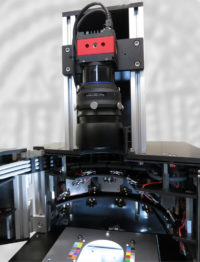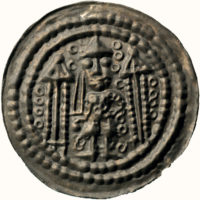 Researchers at the Fraunhofer Institute for Factory Operation and Automation IFF in Magdeburg, Germany, have developed a specialized scanner and software akin to facial recognition technology to record historic coins in heretofore impossible detail. Coins collections poise significant inventory and conservation problems for the institutions that hold them. They can’t be labelled or barcoded. They can’t be marked in any way without interfering with the surface.
Researchers at the Fraunhofer Institute for Factory Operation and Automation IFF in Magdeburg, Germany, have developed a specialized scanner and software akin to facial recognition technology to record historic coins in heretofore impossible detail. Coins collections poise significant inventory and conservation problems for the institutions that hold them. They can’t be labelled or barcoded. They can’t be marked in any way without interfering with the surface.
The Saxony-Anhalt State Office for Heritage Management and Archaeology has 20,000 coins in its archives. Keeping proper track of them for loans to museums, preventing damage, even ascertaining their authenticity pose significant challenges to the staff. The ever-expanding collection has to be documented by hand, a Herculean labour that is never complete and highly prone to error. In conjunction with a larger project of digitization of the State Office’s archaeological materials, the Fraunhofer Institute was employed to devise a system that would scan the coins in its collection.
“The State Office aimed to digitize its complete numismatic collection. This gave rise to the idea of creating a digital fingerprint with which individual coins can be recognized and classified – much like facial recognition of people. The fingerprint replaces the barcode as it were,” says Dr. Christian Teutsch, research scientist at the Fraunhofer IFF, recounting the first contact with the State Office for Heritage Management and Archaeology. The closely collaborating partners designed a visual data acquisition system and software analysis system in their project “Digital Fingerprints of Archaeological Finds: Artifact Identification and Recognition Prototype”, which does this by digitizing and exactly describing the old coins and obtaining unique signatures from the coins. The scanning system had to achieve a recognition rate of ninety-eight percent or more, operate contactless, and acquire the data of both faces. Gold, silver, bronze and copper coins with diameters of five to seventy-five millimeters were tested.
The novel scanner O.S.C.A.R., short for Optical System for Coin Analysis and Recognition, not only scans coins’ visual features but also the minutest signs of wear such as scratching, clipping, contours, edges, pitting and denting, which render an object unique. This is indispensable for being able to identify many coins of the same type. “Obviously, changes can be detected when a coin is scanned twice. This makes it possible, for instance, to check upon the return of loaned coins whether scratching has occurred, the artifact has been damaged or even if it is a fake,” says the engineer, an employee of the Measurement and Testing Technology Business Unit.
 It’s a simple process that takes no more than a few seconds. The barcode on the bag that holds a coin is first scanned, then the coin is put under the scanner. With the push of a button, the scanner records base color and surface features, more than 1000 of them, of both sides of the coins. Measurements and color charts standardize the data which is then transferred to the software. It analyzes the data to create a digital signature that is saved in a searchable database. That makes the coins themselves and everything known about them instantly accessible even if the barcoded bag is lost. It also makes it a simple matter to make this rich data available to scholars and the interested public. Numismatists and collectors can use the scan information to make new connections between coins, their find locations and all the history that is writ on their surfaces.
It’s a simple process that takes no more than a few seconds. The barcode on the bag that holds a coin is first scanned, then the coin is put under the scanner. With the push of a button, the scanner records base color and surface features, more than 1000 of them, of both sides of the coins. Measurements and color charts standardize the data which is then transferred to the software. It analyzes the data to create a digital signature that is saved in a searchable database. That makes the coins themselves and everything known about them instantly accessible even if the barcoded bag is lost. It also makes it a simple matter to make this rich data available to scholars and the interested public. Numismatists and collectors can use the scan information to make new connections between coins, their find locations and all the history that is writ on their surfaces.
The project has been such a smashing success that 10,000 coins in the State Office collection have already been scanned. The remaining half will be digitized shortly.
This is a major breakthrough and not just for numismatics collections. The scanner is targeted to coins, but it could be modified for use with paintings, artifacts, documents, ephemera, anything in heritage collections.